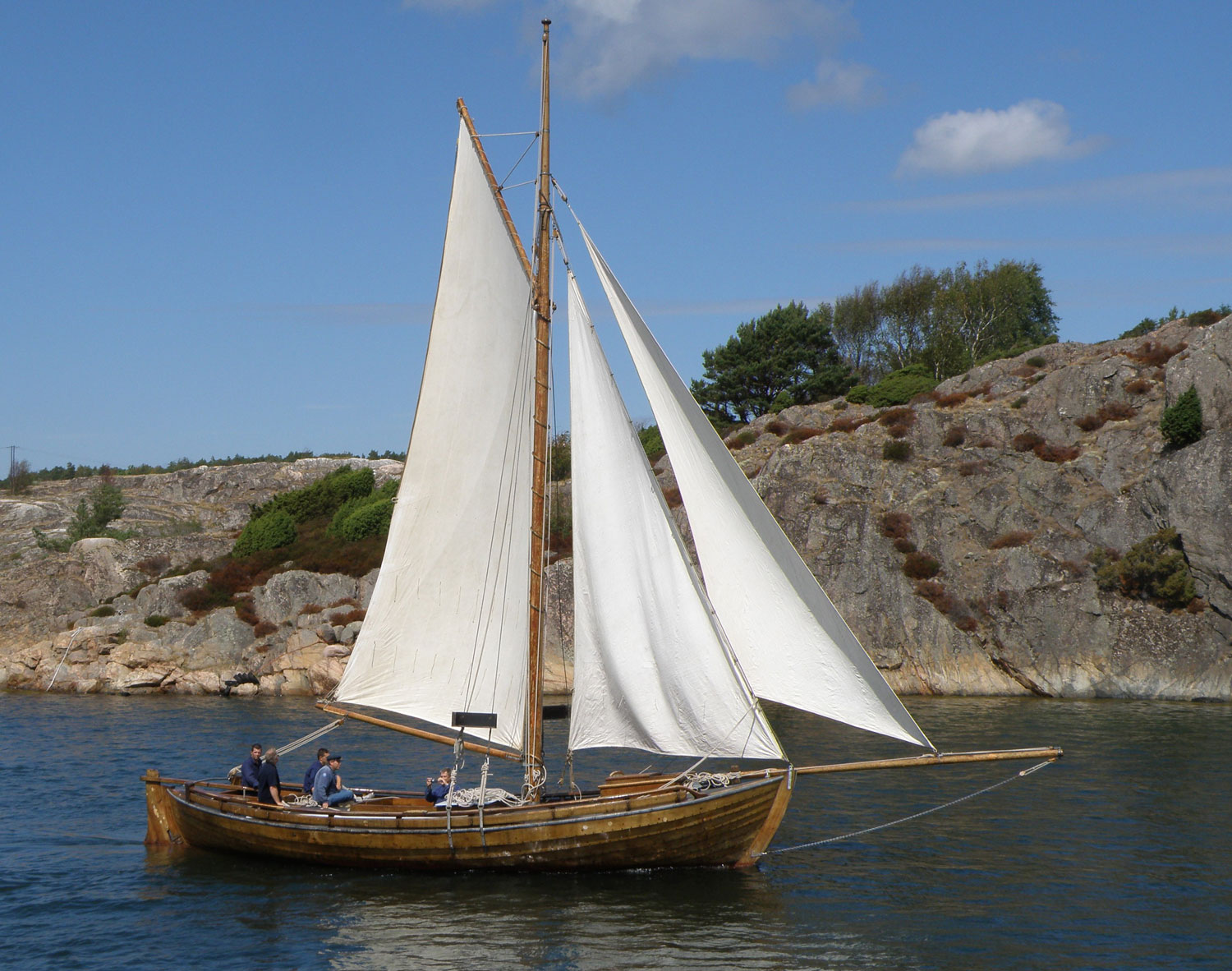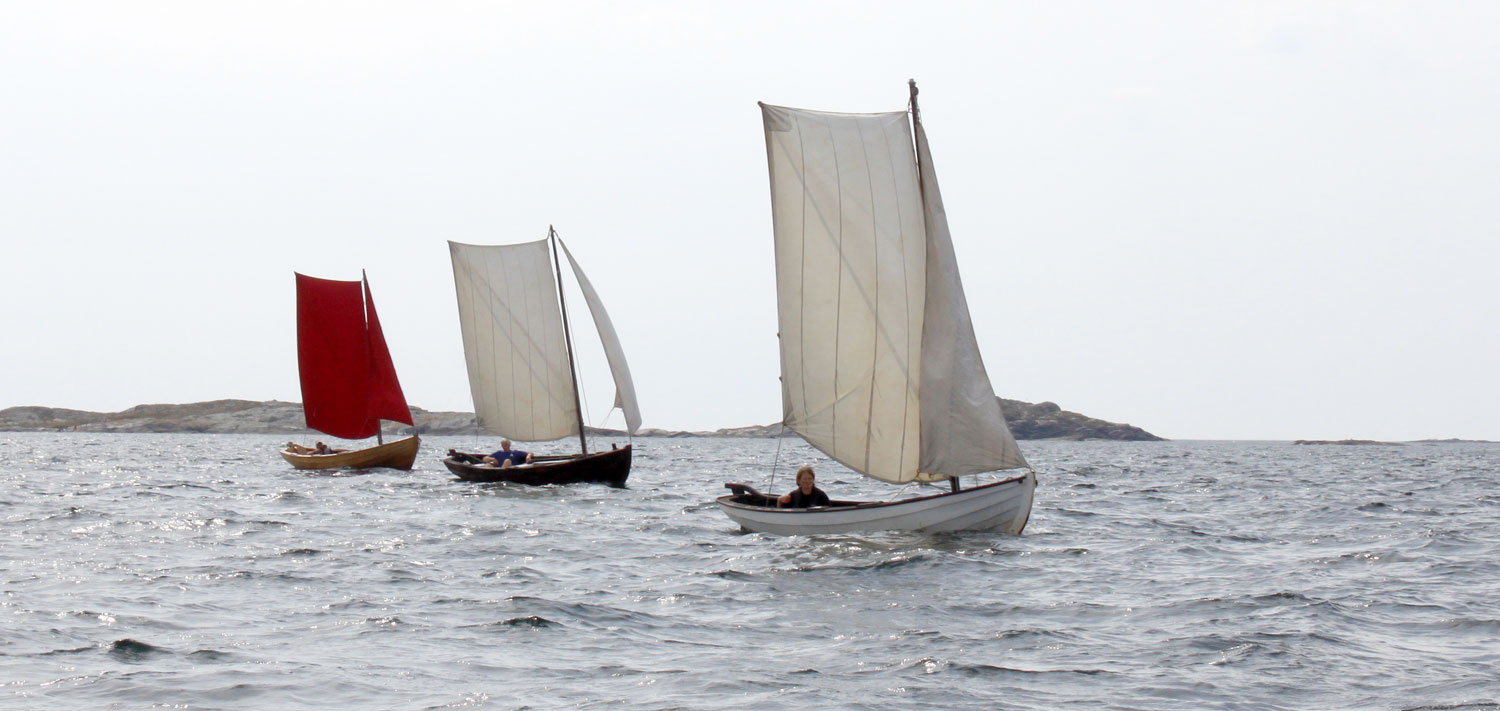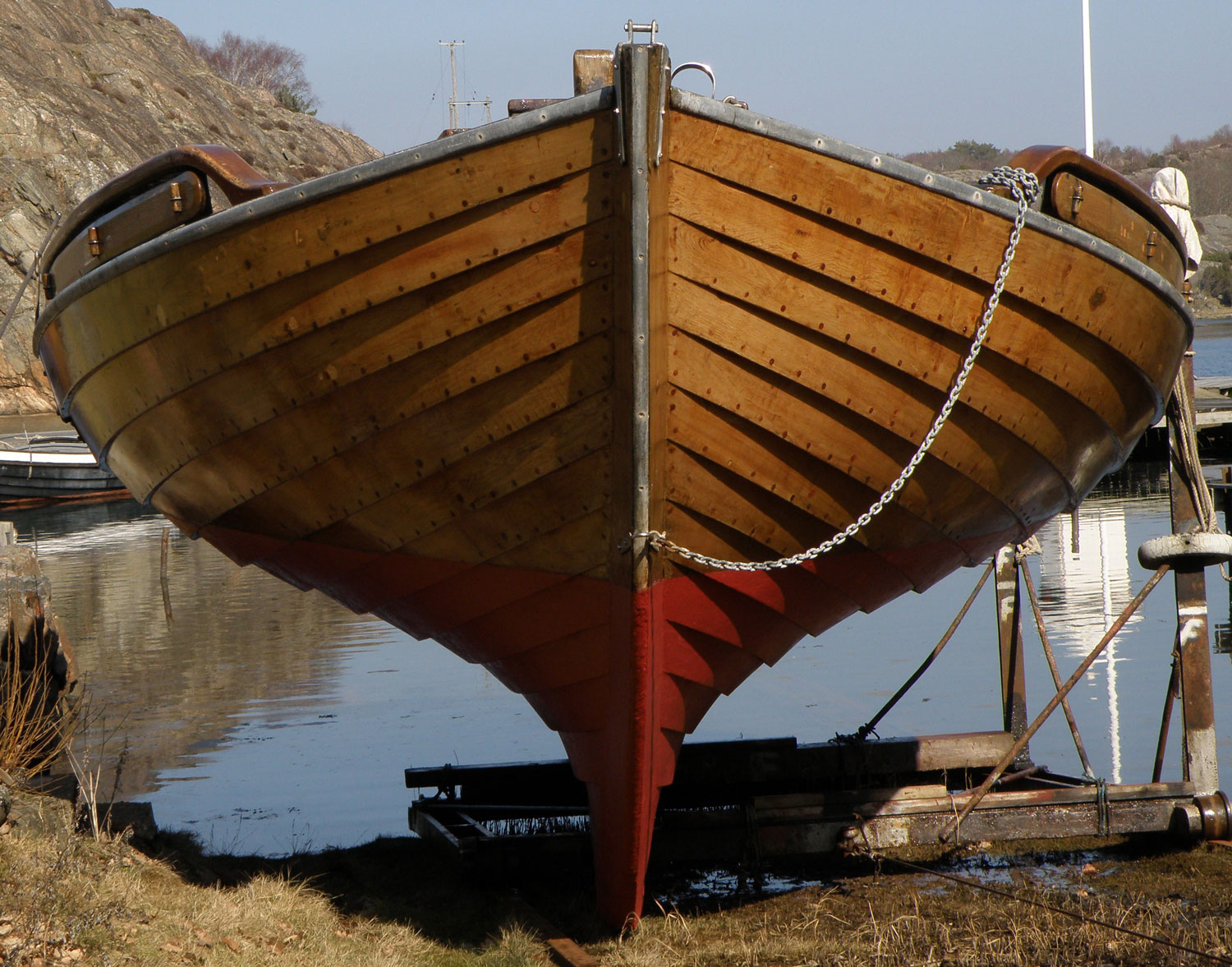- Startpage
- In English
- The Inventory
- Clinker boat traditions
Clinker boat traditions
Building clinker boats is an ancient technique in the Nordic shipbuilding tradition. The old technology is still in use along parts of the Swedish coast, especially for smaller boats, such as the types called ekor, snipor, and jullar.
Location: Nation wide

Photo: Föreningen Allmogebåtar.
Clinker-built means that the edges of hull planks overlap each other and that they are held together along the overlapping edge, called the lands. The base of the boat consists of the keel or bottom platform with stems, to which the planks are attached. The frames are adapted to the shape of the boat and are held to the planks either with wooden pins (called treenails) or with nails of iron (later also copper). To prevent leakage, the boat is sealed with natural fiber (often flax) and tar. In earlier centuries, plant fibres such as moss or animal hair were used.
The method of fitting in the frames after the planking is finished is different from building boats in carvel technique, where the frames are set up on the backbone first, and the planks are attached to them edge to edge, to produce a smooth surface. Clinker boats and even ships were traditionally built without drawings, although in modern times building from drawings has become more common. Boatbuilders used sticks, string and levels or other simple tools to check the hull for symmetry, and could design some components using geometrical methods, such as arcs of circles.
Clinker construction is an historically dominant tradition in Scandinavian boatbuilding, and is usually thought to have originated in the region, although there are boatbuilding traditions using overlapping planks elsewhere in the world, including India and Vietnam.

Photo: Föreningen Allmogebåtar.

Photo: Föreningen Allmogebåtar.


